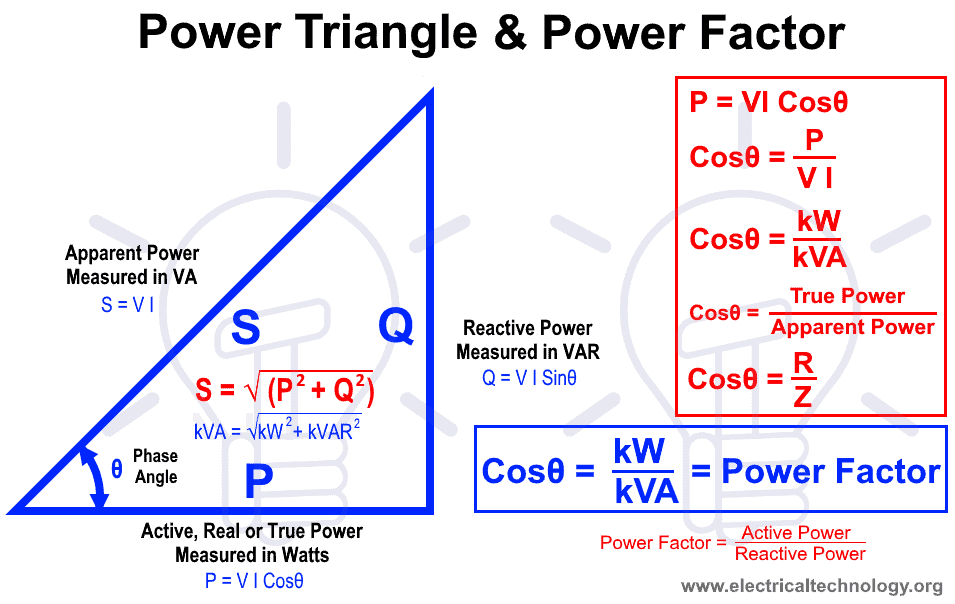what is power factor in electrical
Today, let's talk about an important concept in electrical engineering - power factor. Power factor, represented as cos φ, plays a crucial role in determining the efficiency and quality of electrical systems. It is a measure of how effectively electrical power is being utilized. Understanding power factor is essential for anyone working in the field of electrical technology.
What is Power Factor?
Power factor is defined as the ratio of real power (active power) to apparent power in an electrical system. Real power is the actual power that is consumed and converted into useful work, while apparent power is the product of voltage and current in the system.
To understand power factor better, let's consider an analogy. Imagine you are enjoying a delicious bowl of hot noodle soup. The real power is equivalent to the actual noodles and soup in your bowl, which provide the nourishment and energy. The apparent power, on the other hand, is like the size of the bowl that holds the noodles and soup. The power factor tells you how efficiently you are consuming the noodles and soup from the bowl. A low power factor means you are leaving behind a significant portion of the soup, wasting energy and resources.
Why is Power Factor Important?
Power factor is significant for both consumers and electricity providers. Here's why:
Efficient Utilization of Electrical Systems
A high power factor indicates an efficient utilization of electrical systems, as it means that most of the supplied electrical power is used for useful work. A low power factor, however, indicates a wasteful consumption of electricity, leading to increased energy costs and reduced efficiency. Therefore, it becomes essential to maintain a high power factor to ensure maximum efficiency in electrical systems.
Optimal Generation and Transmission of Power
Electricity providers need to generate and transmit electrical power efficiently to meet the demand of consumers. Power factor plays a crucial role in this process. By maintaining a high power factor, electricity providers can ensure an optimal generation and transmission of power. This reduces power losses and increases the overall efficiency of the electrical grid.
Calculating Power Factor
The power factor can be calculated using the following formula:

The formula for power factor is:
Power Factor (cos φ) = Real Power (P) / Apparent Power (S)
Here, the real power is measured in watts (W), and the apparent power is measured in volt-amperes (VA).
The Role of Reactive Power
Reactive power is an essential component to understand when discussing power factor. Reactive power, represented as Q, is the power that oscillates between the source and the load without being converted into useful work. It is required to maintain the electromagnetic fields in inductive and capacitive components of electrical systems.
Reactive power is measured in volt-amperes reactive (VAR). It is an important consideration because it affects the power factor. Power factor can be improved by compensating for the reactive power using power factor correction techniques, such as the addition of capacitors or inductors.
Power Factor Correction
To maintain a high power factor, power factor correction techniques are employed. These techniques help to minimize reactive power and improve the efficiency of electrical systems. The most common method of power factor correction is the addition of capacitors or inductors, depending on the system's requirements.
Importance of Power Factor in Different Applications
The significance of power factor varies in different electrical applications. Let's explore a few examples:
Industrial Applications
In industrial settings, maintaining an optimal power factor is critical for efficient operation and to avoid penalties imposed by electricity providers. Industrial processes often involve large motors or machinery, which can generate reactive power. By implementing power factor correction techniques, industries can reduce energy costs, improve productivity, and prevent damage to equipment.
Residential Applications
In residential areas, power factor correction is not as significant as in industrial applications. However, it can still have an impact on energy bills. Appliances such as refrigerators, air conditioners, and washing machines can draw reactive power. It is advisable to have a power factor closer to 1 to ensure efficient use of electricity and reduce monthly expenses.
Renewable Energy Sources
Power factor correction is also essential for renewable energy sources, such as solar and wind power. These sources often have fluctuations in voltage and current due to varying weather conditions. By implementing power factor correction techniques, the stability and efficiency of these energy sources can be improved, allowing for a more reliable and cleaner energy grid.
Conclusion
Power factor, represented as cos φ, is a crucial concept in electrical engineering. It determines the efficiency of electrical systems and plays a vital role in optimal generation, transmission, and consumption of power. By maintaining a high power factor, electrical systems can minimize energy loss, reduce costs, and improve overall efficiency. Understanding power factor and implementing power factor correction techniques is essential for anyone involved in electrical technology.
And that concludes our discussion on power factor. If you're interested in learning more about electrical engineering, be sure to check out our other articles on the subject!
Sources:
- Image 1: https://www.electricaltechnology.org/wp-content/uploads/2013/07/Power-Triangle.-Active-Reactive-Apparent-and-Complex-power.-Simple-explanation-with-formulas.-and-power-factor.png
- Image 2: https://i.pinimg.com/originals/59/6d/84/596d845ee53df02fc762d642dade5378.jpg

